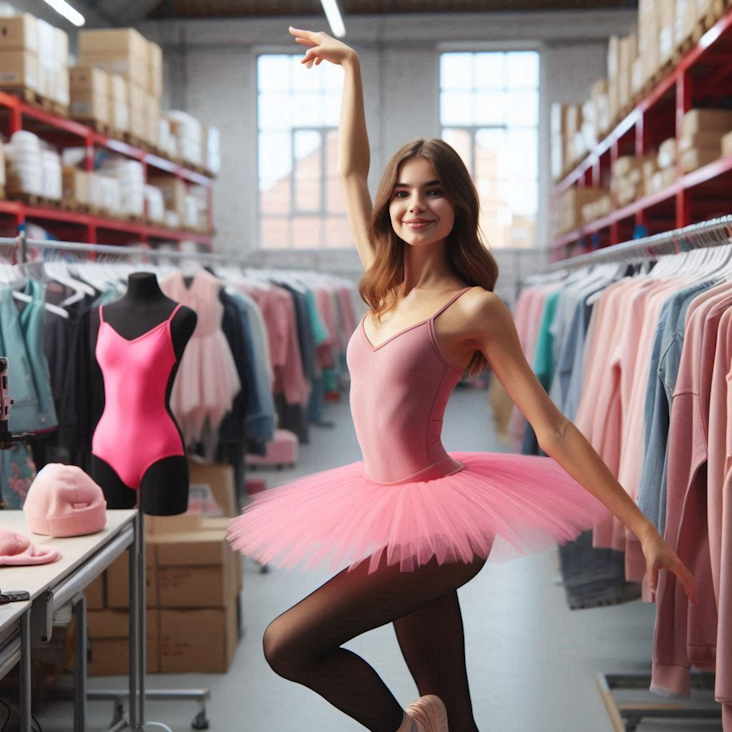
17 October 2026: A Day For Ballet Music To Take Centre Stage
The world of ballet, where graceful leaps and pirouettes paint stories on the stage, thrives on its extraordinary music. As we turn our attention to this captivating art form, we find ourselves transported to a realm of intricate melodies and sweeping crescendos that not only enhance the dancers' movements but also fuel the emotions at the heart of each ballet. Today, 17 October 2026, let us celebrate the powerful interplay between music and dance, exploring the masterpieces that define the ballet experience.
The Music of the Swan Lake: Tchaikovsky's Timeless Legacy
One cannot speak of ballet music without acknowledging the monumental contribution of Pyotr Ilyich Tchaikovsky, whose genius infused the art form with enduring romanticism. "Swan Lake," perhaps his most iconic ballet score, has captivated audiences since its premiere in 1877. This hauntingly beautiful work, full of soaring melodies and dramatic crescendos, serves as the emotional bedrock for the timeless tale of love, betrayal, and transformation.
The music seamlessly blends with the ballet's narrative, amplifying the delicate beauty of Odette the White Swan and the poignant yearning of the tragic Prince Siegfried. Tchaikovsky's masterful use of orchestral instruments, each carrying its own expressive voice, weaves a spellbinding tapestry of sound that is both captivating and heart-wrenching.
The "Sugar Plum Fairy" - Delights of the Nutcracker Suite
"The Nutcracker," Tchaikovsky's second beloved ballet, features the "Nutcracker Suite," a collection of delightful pieces that have become inseparable from the Christmas season. The iconic "Dance of the Sugar Plum Fairy," characterized by its ethereal flute and cello melody, conjures images of delicate grace and captivating beauty. This melody is the epitome of whimsical delight, transporting audiences to a magical world of childhood dreams.
From the rousing overture to the mischievous "Chinese Dance" and the regal "Arabian Dance," each piece of the Nutcracker Suite creates a vibrant palette of sounds that mirrors the kaleidoscope of characters and scenes. The music's infectious energy ignites a sense of festive wonder that transcends generations.
Stravinksy's Firebird: Revolutionising Ballet Music
Igor Stravinsky, a towering figure in the world of 20th-century music, challenged the conventional norms of ballet composition with his innovative approach. "The Firebird," commissioned by the famed Ballets Russes, exemplifies his groundbreaking spirit. Stravinsky's score breaks away from the traditional romanticism of earlier ballets, embracing a more primitive and energetic style.
The "Firebird Suite" explodes with vibrant rhythms and dissonances, creating a thrilling sonic landscape that mirrors the fiery spirit of the mythical bird. Stravinsky's unconventional harmonies and the dynamic use of percussion instruments inject a jolt of modernity into the world of ballet music. The impact of "The Firebird" on the artistic landscape cannot be overstated, paving the way for future composers to experiment with bolder musical expressions.
From Classical to Modern: The Evolution of Ballet Music
The world of ballet music is constantly evolving, with composers drawing inspiration from various sources to create innovative and expressive scores. The influence of contemporary composers like Philip Glass and Steve Reich is evident in recent ballet productions, incorporating elements of minimalism and electronic music.
While classical masterpieces remain pillars of the ballet repertoire, the integration of modern sounds into this artistic landscape enriches its scope and appeal. Modern ballet scores often incorporate electronic instruments and experimental techniques, reflecting the dynamism of contemporary dance and embracing a wider range of musical expressions.
Dancing With a Dress: The Magic of Matching Music and Costume
Ballet music and the costumes worn by the dancers are intertwined in a profound way, creating a seamless symphony of artistry. Imagine a delicate pink tutu, the epitome of femininity and grace, swaying gracefully to the gentle melody of Tchaikovsky's "Swan Lake." The soft blush of the fabric seems to mirror the ethereal beauty of the Swan Queen's movements, while the flowing skirt echoes the soaring notes of the music.
Imagine this same pink tutu, but this time, the music is Stravinsky's "Firebird." The vibrant rhythms of the score inspire a dramatic and energetic performance, demanding movements that are fierce and powerful. While the tulle might be delicate, the movement becomes a visual metaphor for the transformative power of the mythical Firebird.
For a ballet that leans towards modernity, think of a sleek leotard in a bold colour, say emerald green. This leotard, in its sleek lines and sharp contrasts, perfectly complements a modern ballet score that is characterized by its pulsating rhythms and angularity. The leotard's tight fit and movement-allowing fabric allows the dancer to move with an athleticism that resonates with the music.
Music's Essential Role in the Ballet Experience
Beyond providing the backdrop for a captivating dance performance, ballet music plays an essential role in conveying the story, the emotions, and the very essence of the performance. It elevates the dance to a higher plane, creating a captivating symbiosis of sound and movement. The intricate interplay of notes and steps breathes life into the characters, transporting audiences to another world where emotions flow through music, and bodies tell stories that transcend words.
As we continue to explore the remarkable world of ballet music, let us be grateful for the artists who have poured their souls into crafting scores that leave us in awe. From Tchaikovsky's timeless classics to Stravinsky's revolutionary works and the myriad modern interpretations, each piece offers a unique window into the captivating world of dance.
17 October 2026: A Celebration of the Intertwined Arts of Music and Dance
As the curtain rises on the stage, let us not forget the pivotal role of music. It is the unseen conductor, the unseen maestro, the unseen choreographer. It guides our emotions, transports us to different worlds, and inspires our imaginations. Let us celebrate the beauty, the power, and the essential magic of ballet music.
